The Starboard X-15 91 had been available for a while, but we had to wait a long time for the smaller brother. The X-15 (especially the 85) has already more than proven itself in PWA in 2022. X-15 is the new name for Starboard slalom foil boards. This also suggests that the concept has undergone a major overhaul.
According to Starboard and team rider Nico Prien, the X-15 85 is the most versatile and versatile. We have extensively tested the board in many varying conditions. Read on to what extent this board is different from the old Starboard slalom foilboards.
Starboard X-15 Carbon available in 3 sizes
The X-15 is available in 3 sizes, the X-15 78, X-15 85 and X-15 91. We think the X-15 85 and X-15 91 are the most interesting sizes.
- Starboard X-15 85 | Length 210 cm | Width 85 cm | Volume 176 | Weight 9,0 kg | Sailing 5,0 – 8,0 m2 | Price € 3.199,-
- Starboard X-15 91 | Length 210 cm | Width 91 cm | Volume 189 | Weight 9,6 kg | Sailing 6,0 – 9,0m2 | Price € 3.199,-
Starboard X-15 radical appearance and design
What immediately stands out about the board is the very different appearance and shape of the board. In this, the board is completely different from the previous slalom foilboards from Starboard. The X-15 85 looks relatively thin, but the board still has a volume of 176 liters. Furthermore, it is noticeable that the deck is almost completely flat and the nose relatively thin. The back is almost straight, with the deck after the rear foot straps sloping down. At the bottom of the board, the huge V at the front of the board stands out and the raised section at the foil box. The drop shape of the bottom is even more extreme in shape than with the previous model. All these shape aspects ensure better aerodynamics.
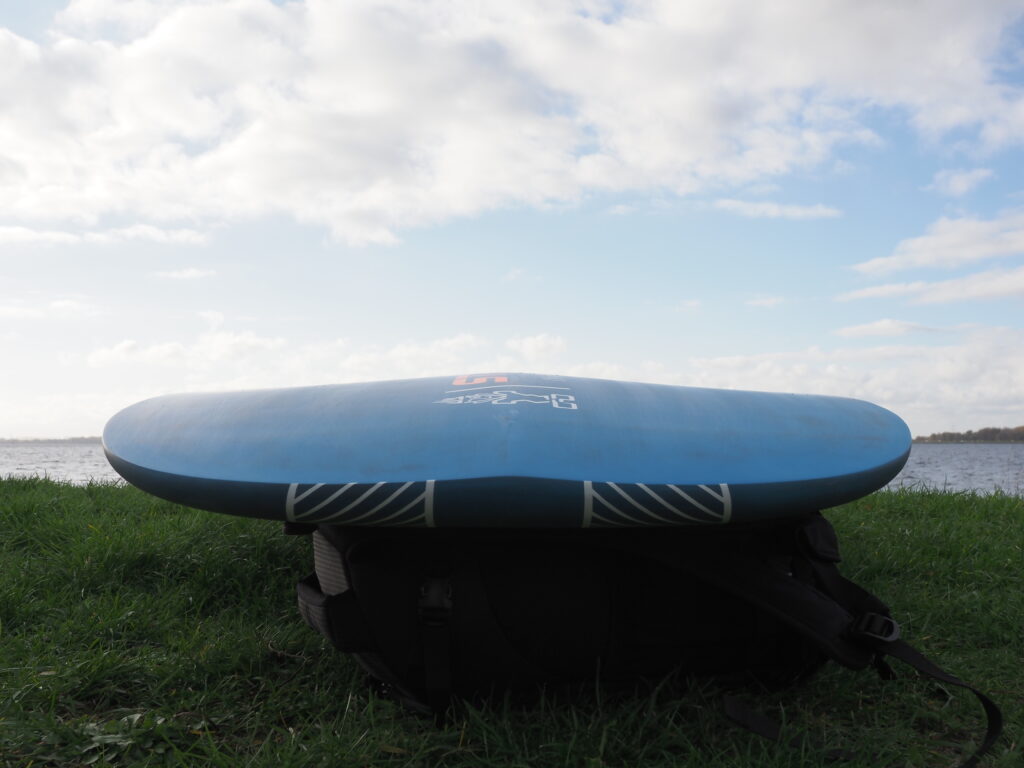
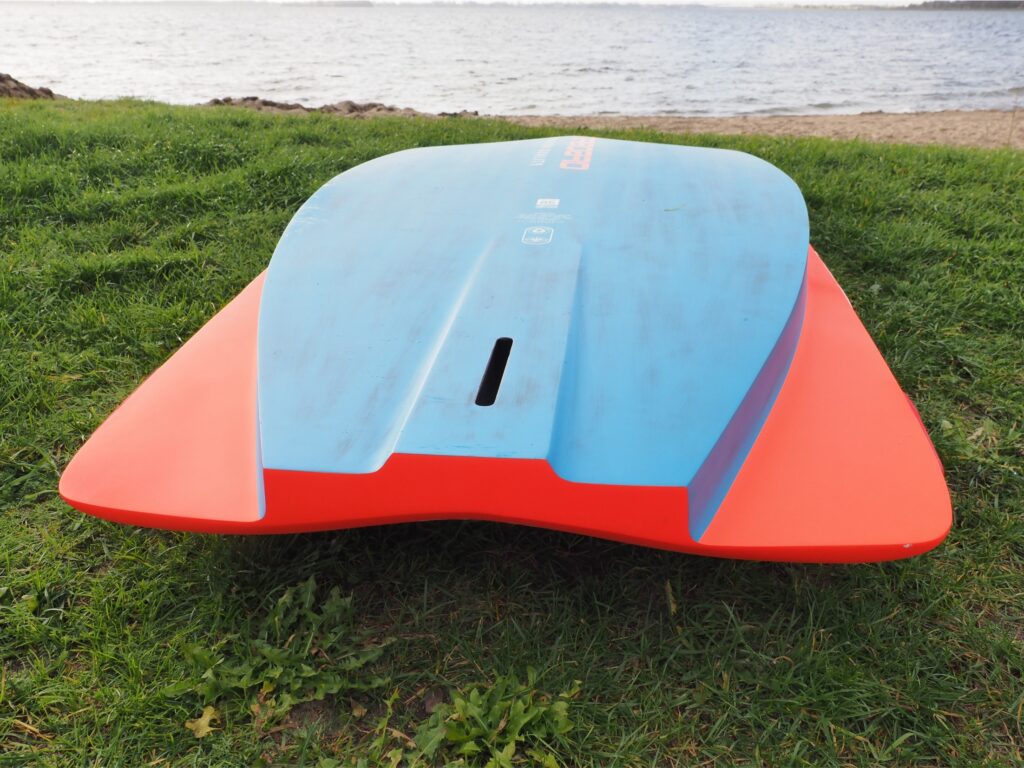
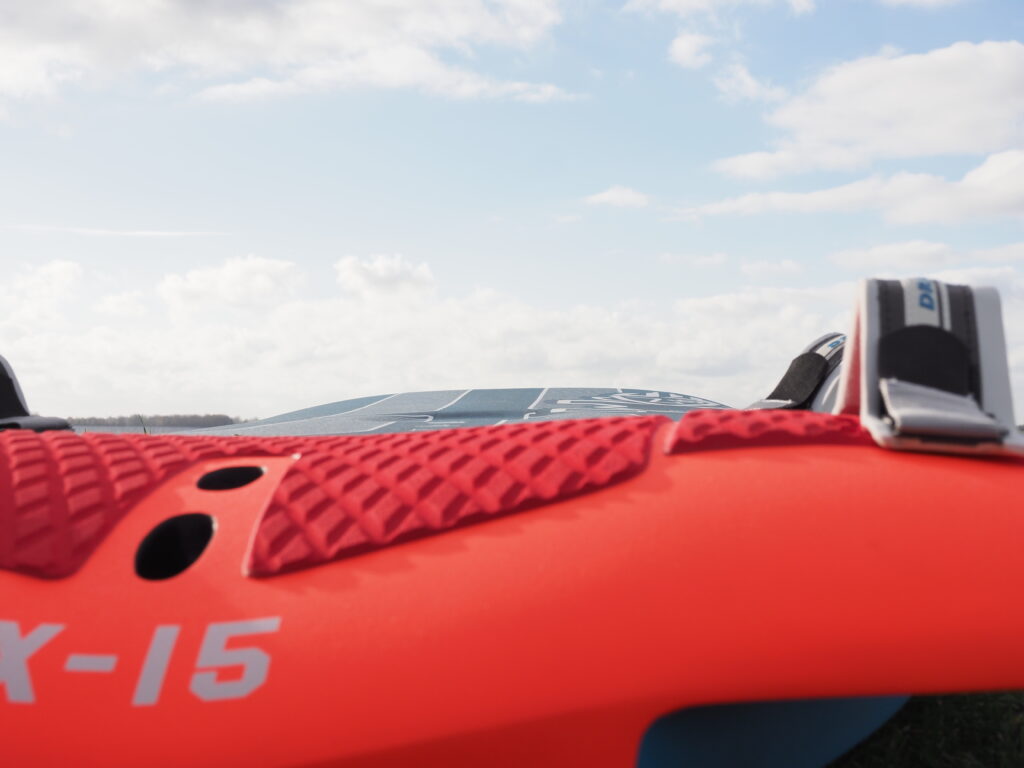
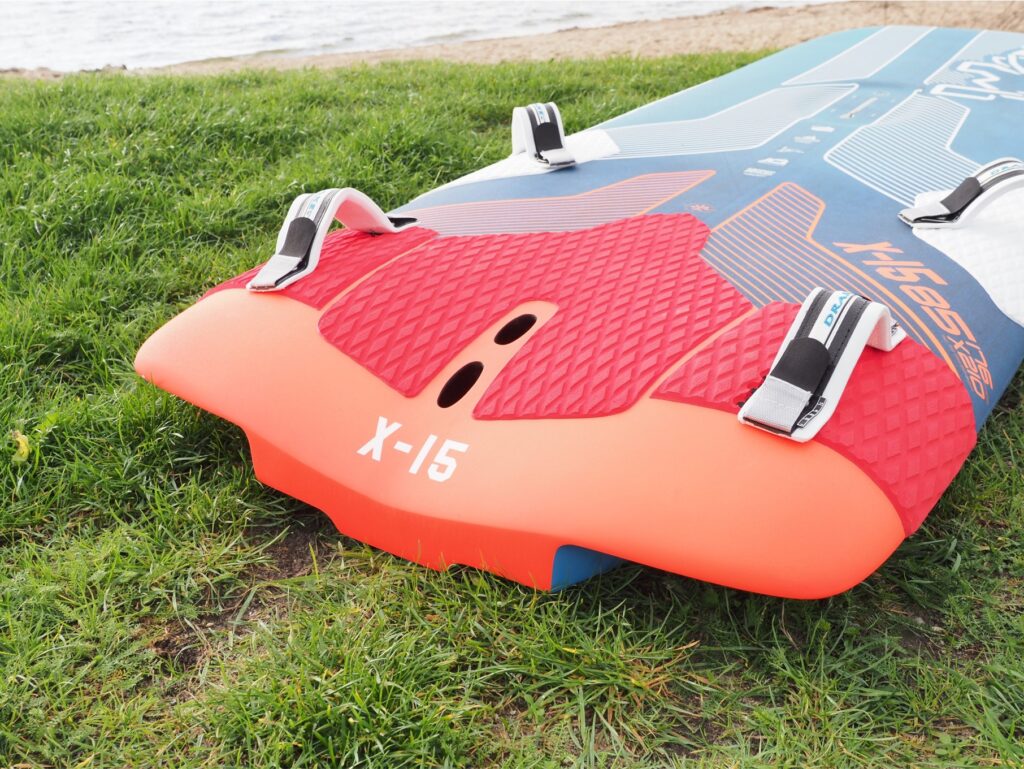
Compared to the previous slalom foilboard, both foot straps and the mast rail are respectively 2 cm and 3.5 cm further back. This ensures that you can wind foil earlier with smaller wings. The disadvantage is that the set can get nervous a little faster.
For the rear foot straps there are 2 rows of plugs. 1 row to put the footband a little further out and 1 row to place the foot straps about 2 cm more inwards. That is very nice, the inner position ensures that you are more comfortable and keep control longer. More on that later!
P.S. the white footbands are not the standard footbands. As standard, this board comes with soft (and thicker) Drake Slick foot straps. The Drake Ultra light foot straps are optionally available separately.
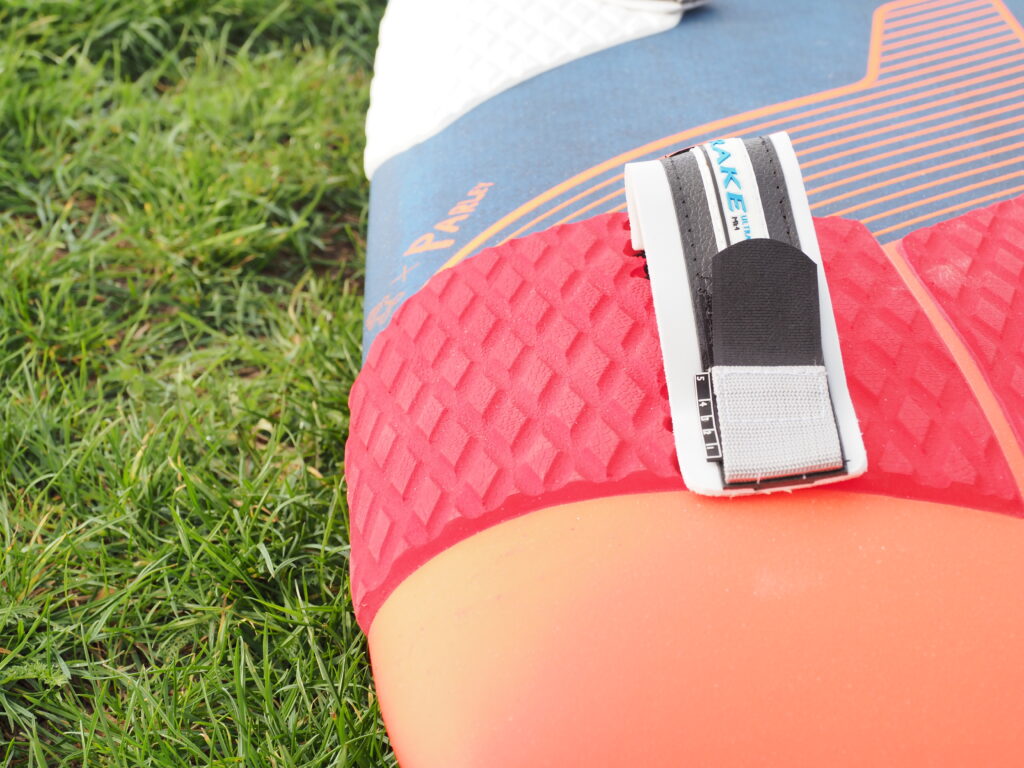
Starboard X-15 85 tested in different conditions
We have recently been treated in the Netherlands with exceptionally high temperatures and also a lot of (gusty) wind. We have been able to test the board in many different wind conditions with different settings, sizes of sails and foils. So just a challenge where to start sharing our experiences. Okay let’s start with the sailing. We tested the board with sails from 6.0 m2 to 8.0 m2. With the F4 Foils Slalom race foil with front wings ranging from 420 cm2 (!) to 620 cm2 and the F4 Foils Freerace (front wing 850 cm2 / fuselage 100 cm / back wing 210 cm2).
Sailing range from 5.0 m2 to 8.0m2
The X-15 85 foils with an 8.0m2 much better than the previous generation. This is mainly due to the extra width. We found the 7.0m2 to be the ideal size for this board. The 6.0m2 also felt better balanced on this board than on the old version. We have not yet tried the 5.0m2 on this board, but we expect that a 5.0m2 also matches perfectly with this board. In terms of sail sizes, the range of use of this board has become a lot larger.
Freerace & Slalom foils
The Starboard X-15 85 foils best with slalom foils or with freerace foils with a fuselage of max 105 cm. We tried the F4 Foils Freerace with the 8.0m2 and that set up for little wind was very fast and felt well balanced. Because the foot strap positions and the mast rail are relatively far back (more on that below), a foil with a fuselage longer than 110 cm will give too much lift to really be able to foil half wind and down wind.
1. Starboard X-15 85 with little wind very fast on the foil
We sailed the board with little wind, with the Severne HGO 8.0m2 and the F4 Foils Freerace with about 9 to max 13 knots of wind. What is striking is that the board is very easy to ‘pop up’. The funnel shape of the bottom and drop shape of the rails at the rear are certainly takes care of this. With this wind we also stand with the back foot on the edge of the board. The board is ‘only’ 4 cm wider compared to the previous model, but it feels much more. With a somewhat larger sail you are much more stable and comfortable and you can generate a lot of power.
We started with this little wind with the rear foot strap as far out as possible. With this wind this is fine. It now feels like we’re on a race foilboard like the IQfoil 85. The 8.0m2 also feels good on this board. Half wind we are fine. If we go with a good gust down wind, you feel that the board is really developed for down wind foiling. The board accelerates very easily and we are actually a bit more comfortable. This gives confidence (and challenges you) to push hard. Jibing on this board is also easy. Although we have the impression that we have start the jibe with a little more conviction i.c.w. last year’s board to jibe as quickly as possible. Perhaps this has to do with the extra width.
2. Medium wind preference for inner foot straps positions
With a very gusty wind that varied between 12 and 22 knots it was with the Severne HG5 7.0m2 with the F4 Foils Slalom (FW 560 cm2 / BW 190 cm2) looking for the right position. In gusty conditions, control and stable wind foiling is a bit more challenging. We noticed that we got more control as soon as we placed the rear foot straps inside. We were able to stand more with our foot flat on the deck, which gave us more control, especially downwind. The 7.0m2 looks like the ‘sweet spot’ in terms of size in combination with the slalom foil. Boy what accelerates the board easily down wind. Due to the very gusty wind we had a strong touch down several times down wind. So we have regularly experienced the impact of the extreme V shape. Where many foilboards slow donw considerably with a touch down (resulting in a catapult), now the nose bounced back up or the board first planned over the water and then went up again. Of course we also went a number of times over the 50 km/h down wind and then getting a touch down, then it isn’t possible to avoid big crashes :(.
Rake van mast/fuselage important for ‘not sticking’ nose
Side note that we want to make with the above is that everything stands or falls with the rake of the mast / fuselage. We sail this set with the standard rake of the F4 Foils carbon mast. This is +3 degrees! This positive rake ensures, among other things, that the nose of the board does not ‘stick’ with a touch down. If we would get a touch down with a rake of 0 degrees, then the nose of this board would also stick much more. But despite the positive rake with which we foil, we notice that the V shape ensures better planing / bouncing up of the nose i.c.w. other foil boards and the slalom foilboard of 2022.
3. High wind comfortable and stable
With a steady wind we also tested the board with the 6.0m2. The 6.0m2 also feels very nice in combination with the board. On the previous board we sometimes pulled the under part of the sail over the deck, but with this board not at all. We have a nice pressure on our back hand, which allows us to foil more constantly and in wind dips we therefore stay sufficiently with more pressure as well. So the deployment range of the 6.0m2 is therefore better and this sail size feels better balanced on this board. In these conditions (up to about 24 knots) the differences with the previous board are increasing. We are more in control because we are more comfortable with the rear foot straps in the inner position. In addition, the board seems to ‘glide’ through the air a bit quieter, which is due to the flat deck and the optimized shape of the rail, which means that there are fewer swirls around the board. The board gives so much confidence that with even more wind we also want to go on the water with a 5.0m2!
Fine tuning trim Starboard X-15 85
In the end, the inner foot strap position is our preference. Only with little wind would we choose the outer foot strap position. This gives extra power if you can stand on the edge of the board. However, in our experience this does not outweigh the extra control that gets when there is more wind and / or waves. For down wind foiling you are at all times more comfortable with your back foot slightly inwards. But this will also be a personal thing.
Because both the foot straps and the mast track are further back, the set can feel a bit more nervous (dolphin behavior at times and wind holes). We used the middle foot strap plugs for both the front and rear foot straps. On most foilboards we often place the mast base about 1.5 to 3 cm behind the middle. On the X15 85 we placed the mast foot with light and medium wind about 1 cm behind the middle and with more wind and gusty wind we placed the mast foot exactly in the middle of the mast track. That gave us more stability and control, which made us faster and still had enough lift.
With gusty wind preference for a little more lift
We already wrote that in the Netherlands we (increasingly) have to deal with very gusty winds. This makes stable wind foiling more difficult. With a gust of wind, the nose of the board is often pushed down and in wind holes the nose wants to go up. In these conditions we prefer to sail with a slightly larger front wing and we also trim a little more lift in the back wing. This makes the foil slightly more stable. This sounds contradictory, but on average you create more lift on your front foot, so you have to continuously put a little more pressure on your front foot. Because of this extra lift, the nose of the board is pushed down less violently. We notice that in these circumstances (this is separate from the board you are foiling with) we are faster and more relaxed than with smaller wings.
Who is the Starboard X-15 85 suitable for?
- If you want to foil in a wide wind range, with sails no larger than 8.0m2 slalom foiling, choose the X-15 85
- If you are heavier than 90 kg and/or you want to sail with little wind or with larger sails than about 7.5 m2, choose the X-15 91
- The board is easy to foil with a lot of feeling. So even a demanding freerider can have a lot of fun with this board
- The board comes into its own best with freerace or slalom foil. The foil is still the most important part in the set!
- The board sails most stable with wind foil racing sails. If you want to use the full potential of the board, that is something to take into account
Want to try Starboard X-15 85 for yourself?
Do you want to test the Starboard X-15 85 or another board or foil? That allows us to have the most common products available for testing. Testing of material is only possible by appointment. We are also happy to help with the tuning of the board of foil. If you have any questions or would like to make a test appointment, please send us an email.
-
Sales offer
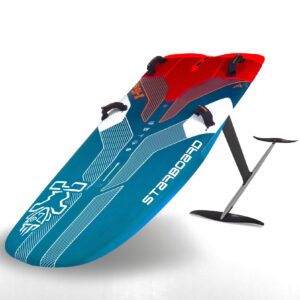
Starboard X-15 Foil Slalom
€1.659,00 – €1.759,00 incl. VAT Select options This product has multiple variants. The options may be chosen on the product page


